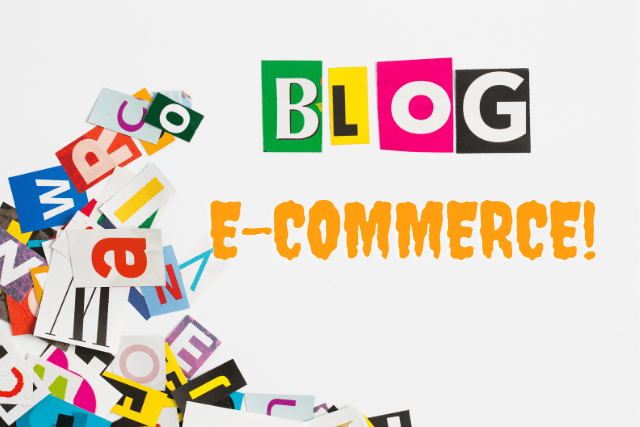Twitter is not only a platform to share your thoughts, connect with friends, and stay updated with the latest news. It can also be a powerful tool to drive e-commerce sales for your business.
With over 330 million monthly active users, this social media platform offers immense potential to reach a wide audience and boost your online sales. However, utilizing Twitter effectively requires a strategic approach.
This article will explore using Twitter to drive e-commerce sales and maximize your business’s online presence.
Table of Contents
Key Takeaways
- Choose a username that reflects your brand and is easy to remember
- Tailor your content to resonate with your target audience
- Incorporate visuals and compelling calls-to-action in your tweets
- Utilize Twitter advertising options to increase visibility and engagement
Top Twitter Marketing Tools for Online Stores
To help you make the most of your Twitter marketing efforts, here are some of the top tools available for online stores:
1. Hootsuite
Hootsuite is a popular social media management platform that allows you to schedule and manage your Twitter posts, track mentions, and analyze your performance. With its user-friendly interface and robust features, Hootsuite is a reliable choice for businesses of all sizes. Key features include:
- Schedule and publish tweets
- Monitor mentions, keywords, and hashtags
- Analyze performance with built-in analytics
- Manage multiple social media accounts.
Visit the Hootsuite website for more information.
2. Buffer
Buffer is a sleek and intuitive social media management tool that simplifies the process of scheduling and publishing tweets. Its minimalist design and powerful features make it a favorite among marketers. Key features include:
- Schedule tweets for optimal times
- Analyze tweet performance
- Manage multiple social media accounts
- Browser extensions for easy content sharing
Learn more about Buffer by visiting their website.
3. TweetDeck
Twitter itself developed TweetDeck, a free Twitter management tool. It offers a customizable dashboard to manage multiple Twitter accounts and monitor mentions, hashtags, and more. With its real-time updates and flexible layout, TweetDeck is perfect for those who want a straightforward solution. Key features include:
- Manage multiple Twitter accounts
- Monitor mentions, hashtags, and keywords
- Schedule tweets
- Customizable columns for easy organization
Check out TweetDeck for a hands-on experience.
4. Tweepi
Tweepi is a Twitter growth tool that helps you find and engage with relevant users to grow your online store’s following. Its AI-driven recommendations and user-friendly interface make it a powerful tool for expanding your reach. Key features include:
- Find and follow relevant users
- Unfollow inactive users
- Monitor user engagement
- AI-driven recommendations for growth
Explore Tweepi’s features on their website.
5. SocialBee
SocialBee is a versatile social media management tool that offers content curation, scheduling, and analytics for Twitter and other platforms. With its comprehensive features and personalized content suggestions, SocialBee is a great choice for businesses looking to optimize their social media strategy. Key features include:
- Schedule and publish tweets
- Content curation and suggestions
- Performance analytics
- Manage multiple social media accounts
Visit the SocialBee website to learn more.
6. Sprout Social
Sprout Social is a comprehensive social media management platform offering a range of Twitter marketing tools, including publishing, analytics, and engagement. Its in-depth analytics and team collaboration features make it an excellent choice for businesses looking to streamline their social media efforts. Key features include:
- Schedule and publish tweets
- Monitor mentions, hashtags, and keywords
- Analyze performance with in-depth analytics
- Manage multiple social media accounts
Discover more about Sprout Social on their website.
Setting up a Twitter account for your e-commerce business
When setting up a Twitter account for your e-commerce business, choosing a username and profile picture that align with your brand identity and is easily recognizable is crucial.
Creating a compelling bio and header image can help attract potential customers and give them a glimpse into what your business offers.
Don’t forget to link your website and other social media accounts to your Twitter profile, as this can help drive traffic and increase your online presence.
Choosing a username and profile picture
Selecting a username and profile picture is crucial for attracting potential customers on Twitter. Here are four tips to help you create an effective Twitter presence:
- Choose a memorable Twitter handle: Your username should reflect your brand and be easy to remember. Avoid using numbers or special characters that might confuse your audience.
- Use a professional profile picture: A clear and high-quality image of your logo or a professional headshot will make your profile appear more trustworthy and credible.
- Optimize your bio: Write a concise and engaging bio that highlights what your e-commerce business offers. Include relevant keywords and a link to your website for easy navigation.
- Consistency is key: Ensure that your username, profile picture, and bio align with your overall brand image across all social media platforms.
Creating a compelling bio and header image
Ensure your bio and header image captures the essence of your brand and leave a lasting impression on potential customers. Use concise and engaging language in your Twitter bio to describe your business and highlight what separates you.
Incorporate relevant keywords and terms that will attract your target audience and make it easy for them to find you. Use active voice and contractions to make your bio more approachable and relatable.
Your header image should visually represent your brand and convey your unique selling proposition. Whether it’s showcasing your products, displaying your logo, or featuring your team, make sure it aligns with your overall brand aesthetic.
Remember, your bio and header image are your first impression on potential customers, so make them count in driving e-commerce sales.
Linking to your website and other social media accounts
Link your website and other social media accounts to your Twitter profile to increase your online presence and connect with a wider audience.
Here are four key benefits of linking to your website and social media accounts:
- Increased visibility: Linking to your website and social media accounts on your Twitter profile allows followers to easily find and explore your online presence, increasing your visibility and reach.
- Improved credibility: When users see that you have a website and active social media accounts, it enhances your credibility and professionalism, making them more likely to trust and engage with your brand.
- Seamless navigation: By providing direct links to your website and social media accounts, you make it easier for users to navigate between platforms, encouraging them to explore more of your content and potentially make a purchase.
- Cross-promotion opportunities: Linking to your website and social media accounts enables cross-promotion, allowing you to drive traffic from Twitter to your other platforms and vice versa, expanding your audience and increasing your chances of driving e-commerce sales.
Building an engaged Twitter following
When it comes to building an engaged Twitter following, it’s crucial to start by identifying your target audience and their interests. So, you can tailor your content to resonate with them and attract their attention.
Using relevant hashtags is a powerful way to increase your visibility and reach on Twitter, allowing you to connect with users who are interested in the same topics.
Don’t forget the importance of interacting with your followers and other industry influencers. Engaging in conversations, responding to comments, and collaborating with influencers can help you build a strong community and establish credibility in your niche.
Identifying your target audience and their interests
Identifying your target audience and their interests is crucial for driving e-commerce sales on Twitter. To effectively reach your target audience and pique their interest, consider the following:
- Conduct thorough research: Take the time to understand your target audience’s demographics, such as age, location, and gender. This will help you tailor your content and promotions accordingly.
- Analyze their online behavior: Dive deep into your target audience’s online activities. What topics do they engage with the most? What hashtags do they use? This will give you valuable insights into their interests and preferences.
- Engage in social listening: Monitor conversations and mentions related to your industry or product. This will help you identify trends, pain points, and opportunities to connect with your target audience.
- Leverage analytics tools: Utilize Twitter’s analytics or third-party tools to track engagement, click-through rates, and conversion rates. This data will help you measure the success of your e-commerce efforts and make informed decisions.
Using relevant hashtags to increase visibility
To increase visibility on Twitter, it’s important to incorporate relevant hashtags into your content.
Hashtags are keywords that categorize your tweets and make them more discoverable to a wider audience. With this, you can increase the chances of your tweets being seen by people interested in your industry or topic.
This can lead to more engagement, and followers, ultimately driving traffic to your e-commerce website. When choosing hashtags, ensure they are specific to your niche and resonate with your target audience.
Researching and using trending hashtags is important to capitalize on current conversations and events. Regularly monitoring and analyzing the performance of your hashtags can also help you refine your strategy and increase your visibility even further.
So, don’t underestimate hashtags’ power in increasing your Twitter visibility and driving e-commerce sales.
Interacting with followers and other industry influencers
Engage with your followers and industry influencers by responding to their comments and sharing their content, fostering community and building valuable relationships.

Interacting with your followers and industry influencers on Twitter can significantly impact your e-commerce sales.
Here are four ways you can leverage these interactions to drive more business:
- Respond promptly: When your followers reach out to you with questions or comments, make it a priority to respond promptly. This shows that you value their input and are attentive to their needs.
- Share valuable content: Retweet and share the content your followers and industry influencers created. This helps amplify their message and positions you as a valuable resource for your audience.
- Collaborate on campaigns: Partnering with industry influencers for joint marketing campaigns can help you reach a wider audience and increase your brand visibility.
- Offer exclusive promotions: Reward your followers and industry influencers by offering exclusive discounts or promotions. This not only encourages engagement but also drives traffic to your e-commerce store.
Creating engaging and shareable content
When it comes to creating engaging and shareable content on Twitter, it’s important to utilize different types of tweets. This means incorporating a variety of content such as product highlights, testimonials, and behind-the-scenes glimpses to keep your audience interested.
Don’t forget to add visuals like images, gifs, and videos to make your tweets more visually appealing and enticing. Make sure to write compelling calls-to-action in your tweets to encourage clicks and purchases, giving your audience a clear reason to engage with your brand.
Utilizing different types of tweets (e.g., product highlights, testimonials, behind-the-scenes
Using different types of tweets, such as product highlights, testimonials, and behind-the-scenes content, can help drive e-commerce sales on Twitter. With the right approach, you can effectively engage your audience and convert them into customers. Here’s how:
- Product highlights: Showcase your top-selling products through eye-catching visuals and compelling descriptions. Use hashtags and mentions to increase visibility and encourage shares.
- Testimonials: Share positive feedback and reviews from satisfied customers. This social proof can build trust and credibility, making potential customers more likely to purchase.
- Behind-the-scenes content: Offer a glimpse into your e-commerce business, giving followers an exclusive look at your processes, events, or team. This personal touch can create a connection and foster loyalty.
- Interactive tweets: Use polls, quizzes, or contests to encourage user participation and generate excitement around your products.
Incorporating visuals (images, gifs, videos) into your tweets
Adding eye-catching visuals to your tweets can significantly increase engagement and capture your audience’s attention. When scrolling through their feeds, users are more likely to stop and pay attention to tweets that include captivating visuals.
Whether it’s a high-quality product image, an animated gif showcasing your product in action, or a short video highlighting its features, visuals can help you stand out from the crowd. They make your tweets more visually appealing and provide an opportunity to showcase your products and entice potential customers.
So, get creative and start incorporating visuals into your tweets to drive e-commerce sales like never before.
Writing compelling calls-to-action to encourage clicks and purchases
To encourage more clicks and purchases, make sure to write compelling calls-to-action that entice your audience to take action. A strong call-to-action is crucial in driving sales and should be an integral part of your marketing strategy.
Here are four tips to help you create effective calls-to-action:
- Be clear and specific: Use concise language that clearly communicates what you want your audience to do, such as “Shop now” or “Buy today.”
- Create a sense of urgency: Incorporate time-limited offers or promotions to motivate your audience to take immediate action.
- Use persuasive language: Use strong action verbs and persuasive adjectives to make your call-to-action more compelling and enticing.
- Make it visually appealing: Use eye-catching colors, fonts, and design elements to draw attention to your call-to-action and make it stand out.
Utilizing Twitter advertising options
If you want to expand your reach on Twitter, you can explore several advertising options. Promoted tweets and trends can help you target a wider audience and increase your visibility.
Running Twitter ads allows you to reach a larger audience and drive more traffic to your website or landing page. Tracking and optimizing your ad campaigns will help you maximize your return on investment (ROI) and ensure you get the most out of your advertising efforts.
Promoted tweets and trends
Promoted tweets and trends can significantly boost e-commerce sales on Twitter. Here’s how you can make the most of these advertising options:
- Reach a wider audience: By promoting your tweets, you can ensure that they are seen by a larger number of Twitter users, increasing your chances of driving traffic to your e-commerce website.
- Increase engagement: Promoted tweets and trends are more likely to catch the attention of your target audience, leading to higher engagement rates. This can result in more clicks, likes, retweets, and ultimately, more sales.
- Target specific demographics: With Twitter’s advanced targeting options, you can narrow down your audience based on factors like location, interests, and behavior. This enables you to reach the right people who are more likely to convert into customers.
- Stay ahead of the competition: By leveraging promoted tweets and trends, you can stand out from your competitors and increase brand visibility. This can help you attract new customers and retain existing ones.
Running Twitter ads to reach a larger audience
Running Twitter ads helps you reach a larger audience and expand your brand’s visibility. With Twitter ads, you can target specific demographics, interests, and locations, ensuring that your message reaches the right people.
By running Twitter ads, you can increase your brand’s visibility and attract more potential customers to your e-commerce store. Twitter ads provide various ad formats, such as promoted tweets and trends, allowing you to showcase your products or services visually appealing and engagingly.
With the ability to incorporate images, videos, and hashtags, your ads can capture the attention of your target audience and drive them to take action.
So, if you want to reach a larger audience and boost your e-commerce sales, consider running Twitter ads today.
Tracking and optimizing your ad campaigns for maximum ROI
To track and optimize your ad campaigns for maximum ROI, you should regularly analyze the performance metrics and make adjustments accordingly.
Here are four key steps to help you drive sales and improve your Twitter strategy when advertising on Twitter:
- Set clear goals: Define what you want to achieve with your Twitter ads, whether it’s increasing website traffic, generating leads, or driving sales.
- Monitor performance metrics: Keep a close eye on important metrics like click-through rates, conversion rates, and engagement levels. This data will help you identify what’s working and what needs improvement.
- Test different ad formats: Experiment with various ad formats, such as promoted tweets, hashtags, or Twitter cards, to see which ones resonate best with your target audience.
- Make data-driven adjustments: Use the insights gained from analyzing your metrics to make informed decisions about your ad campaigns. Adjust your targeting, messaging, and budget to optimize your results and drive sales.
Leveraging Twitter for customer service and support
When it comes to customer service on Twitter, it’s crucial to respond to customer queries and complaints promptly. You show your customers that you value their feedback and are dedicated to resolving any issues they may have.
Providing personalized assistance and recommendations can go a long way in building a positive relationship with your customers and increasing their satisfaction.
By turning satisfied customers into brand advocates through positive interactions, you can harness the power of word-of-mouth marketing and create a loyal customer base.
Responding to customer queries and complaints promptly
It’s important for your business to promptly respond to customer queries and complaints on Twitter to maintain customer satisfaction and drive e-commerce sales. Here are four key reasons why:
- Customer Trust: Responding quickly shows that you value your customers and their concerns. It builds trust and loyalty, making them more likely to shop with you again.
- Positive Reputation: When you publicly address customer queries and complaints on Twitter, it showcases your commitment to customer service. This can enhance your reputation and attract new customers.
- Competitive Advantage: By being responsive on Twitter, you differentiate yourself from competitors who may not prioritize customer support. This can give you an edge in the competitive e-commerce market.
- Brand Promotion: When you resolve customer issues publicly on Twitter, it becomes a form of marketing. Other users see your proactive approach, making them more inclined to engage with your brand and potentially make a purchase.

Providing personalized assistance and recommendations
The ultimate way to enhance the customer experience is by offering personalized assistance and recommendations tailored to customer’s specific needs and preferences.
You can offer them products and services that truly align with their interests. Utilize customer data and analytics to gain insights into their purchase history and browsing behavior.
You can recommend products that they are likely to be interested in and provide targeted assistance throughout their shopping journey. This personalized approach not only increases customer satisfaction but also boosts the likelihood of repeat purchases and positive word-of-mouth referrals.
Turning satisfied customers into brand advocates through positive interactions
Now that you’ve learned how to provide personalized assistance and recommendations on Twitter, it’s time to focus on turning your satisfied customers into brand advocates through positive interactions. Building a community of loyal customers who will promote your brand is essential for driving e-commerce sales. Here’s how you can do it:
- Engage with your customers: Respond to their tweets, comments, and mentions promptly and courteously.
- Share user-generated content: Showcase posts from your customers that highlight their positive experiences with your brand.
- Offer exclusive perks: Provide special discounts or rewards to customers who actively engage with your brand on Twitter.
- Encourage referrals: Create incentives for customers to refer their friends and family to your e-commerce store.
Using Twitter for market research and competitor analysis
Twitter can be a valuable tool for your business. Following are the best possible ways, Twitter can help you, especially when it comes to market research and competitor analysis
Monitoring industry-related keywords and discussions
Follow and participate in industry-related discussions on Twitter to boost e-commerce sales. Stay informed about popular topics and hashtags in your field, and join relevant conversations.
Keep an eye on keywords related to your products or services to identify potential customers and trends. Connect with influencers and industry leaders to increase visibility and establish relationships.
Utilize social listening tools to monitor mentions of your brand and products, allowing you to address customer concerns, offer assistance, and engage with potential buyers.
Examining competitor profiles for insights and inspiration
Examining competitor profiles on Twitter can provide valuable insights and inspiration to enhance your e-commerce business strategy.
Analyzing the tweets, followers, and engagement of your competitors, gives you a deeper understanding of their target audience, content strategy, and overall brand positioning.
Twitter profiles offer a wealth of information that can help you identify successful tactics and learn from their mistakes. Pay attention to the type of content they share, the hashtags they use, and the influencers they engage with.
This will give you a clearer picture of what resonates with their audience and what drives engagement. Use these competitor insights to refine your own content strategy, identify new opportunities, and stay ahead of the competition.
Let their success inspire you to innovate and push the boundaries of your e-commerce business.
Gathering feedback and opinions from your audience through polls and surveys
Gathering feedback and opinions from your audience through polls and surveys can provide valuable insights to enhance your business strategy.
Twitter polls, in particular, are a powerful tool to engage with your followers and gather their opinions on various topics. Here’s how you can leverage this feature to gather feedback and understand your audience’s opinions:
- Create polls that are relevant to your business or industry.
- Keep the questions concise and easy to answer.
- Encourage your audience to participate by promoting the poll on your social media platforms.
- Analyze the results and use them to make informed decisions for your business.
Measuring and analyzing Twitter metrics
When it comes to measuring and analyzing Twitter metrics for your e-commerce sales, it’s crucial to identify the key performance indicators (KPIs) that matter the most to your business.
Twitter analytics can help you track engagement and conversion rates, giving you valuable insights into how your audience is interacting with your content and whether it’s leading to actual sales. Armed with these data-driven insights, you can then adjust your Twitter strategy accordingly, optimizing your efforts to drive even more successful results.
Identifying key performance indicators (KPIs) for e-commerce sales
To identify key performance indicators (KPIs) for e-commerce sales, it’s important to analyze data and track relevant metrics. This will help you gain valuable insights into your online business and make informed decisions to drive sales and increase brand awareness.
Here are four essential KPIs to consider:
- Conversion Rate: Measure the percentage of website visitors who make a purchase. A higher conversion rate indicates effective marketing strategies and a seamless user experience.
- Average Order Value: Track the average amount spent by customers in a single transaction. Increasing this metric can lead to higher revenue and profitability.
- Customer Lifetime Value: Determine the total value a customer brings to your business over their lifetime. Focusing on increasing this metric ensures repeat purchases and long-term customer loyalty.
- Cart Abandonment Rate: Monitor the percentage of customers who add items to their cart but do not complete the purchase. Lowering this rate can boost sales and improve the checkout process.
Using Twitter analytics to track engagement and conversion rates
Twitter analytics is a powerful tool that can provide valuable insights into your audience’s behavior and help you optimize your marketing strategy.
With metrics such as impressions, retweets, likes, and link clicks, you can measure the engagement your tweets are generating.
You can track conversion rates by setting up conversion tracking tags that allow you to monitor how many users are taking specific actions, such as making a purchase or signing up for your newsletter, after clicking on your tweets.
This data will help you tailor your content and improve your campaign’s effectiveness, ultimately driving more e-commerce sales.
Adjusting your Twitter strategy based on data-driven insights
By analyzing your Twitter analytics data, you can make data-driven adjustments to optimize your strategy and increase your chances of success. Here are four ways to adjust your Twitter strategy based on data-driven insights:
- Identify your most engaging content: Look at your analytics to see which tweets are generating the most likes, retweets, and replies. Use this information to create more content that resonates with your audience.
- Determine the best times to tweet: Analyze your data to find out when your followers are most active on Twitter. Schedule your tweets accordingly to maximize reach and engagement.
- Track link clicks and conversions: Use Twitter analytics to see how many people are clicking on the links in your tweets and making purchases. Adjust your content and calls to action to improve conversion rates.
- Monitor follower growth and engagement rate: Keep an eye on your follower count and engagement rate over time. If you notice a decline, analyze your content and make changes to regain momentum.
Integrating Twitter with your e-commerce website
If you want to maximize the impact of Twitter on your e-commerce website, there are several strategies you can implement. First, consider embedding tweet feeds and share buttons on your product pages to encourage customers to share your products with their followers.
Additionally, you can actively encourage customers to share their purchases and reviews on Twitter, further increasing your brand visibility.
Lastly, running exclusive promotions and giveaways specifically for your Twitter followers can help incentivize engagement and attract new customers to your website.
Embedding tweet feeds and share buttons on your product pages
You can increase engagement and drive more sales by embedding tweet feeds and share buttons on your product pages. Here’s how it can benefit your e-commerce website:
- Boost Social Proof: By embedding tweet feeds on your product pages, you showcase real-time customer reviews and testimonials, proving the popularity and credibility of your products.
- Expand Reach: With embedded share buttons, you allow visitors to easily share your product pages on Twitter, extending your brand’s reach to a wider audience.
- Drive Traffic: When customers share your product pages on Twitter, it generates organic traffic back to your website, increasing visibility and potential sales.
- Encourage User-generated Content: By integrating tweet feeds and share buttons, you encourage customers to engage with your brand, promoting user-generated content and building a sense of community.
Embedding tweet feeds and share buttons on your product pages is a simple yet effective strategy to leverage the power of Twitter and drive e-commerce sales.
Encouraging customers to share their purchases and reviews on Twitter
When customers share their purchases and reviews on Twitter, it creates a sense of authenticity and encourages others to trust and engage with your brand. So, how can you encourage your customers to share their experiences on this platform? Start by providing incentives.
Offer exclusive discounts or rewards for customers who tweet about their purchases or leave reviews. This not only motivates them to share but also creates a positive image of your brand.
Make it easy for customers to share by including social sharing buttons on your website and product pages. Simple prompts like “Share your purchase on Twitter” can go a long way in encouraging customers to spread the word. Don’t forget to engage with and acknowledge those who share their experiences.
Retweet their posts, reply to their comments, and show them that their opinion matters. This way, you are not only building trust but also creating a community of loyal customers who will help promote your brand.
Running exclusive promotions and giveaways for Twitter followers
This is a great way to reward your loyal followers and attract new ones. Here’s how you can do it:
- Offer special discounts: Create unique promo codes or limited-time offers exclusively for your Twitter followers. This will give them an incentive to make a purchase and spread the word.
- Host giveaways: Organize contests where your followers can enter to win free products or services. This will generate excitement and engagement on your Twitter page.
- Collaborate with influencers: Partner with popular influencers in your industry to host joint promotions or giveaways. This will help you reach a wider audience and increase brand visibility.
- Use hashtags: Create a branded hashtag for your promotions and ask your followers to use it when sharing their purchases or participating in giveaways. This will make it easier for you to track and measure the success of your campaigns.
Frequently Asked Questions
How Do I Choose the Right Username for My E-Commerce Business Twitter Account?
To choose the right username for your e-commerce business Twitter account, consider using your brand name or a variation of it. Keep it short, memorable, and relevant to your business.
How Can I Ensure That My Content on Twitter Is Shareable and Able to Drive Sales?
Focus on creating engaging and valuable posts. Use eye-catching visuals, compelling captions, and relevant hashtags. Encourage followers to retweet and share your content to expand its reach.
What Are Some Twitter Advertising Options Specifically Designed to Boost E-Commerce Sales?
Some twitter advertising options specifically designed to boost e-commerce sales include promoted tweets, promoted accounts, and promoted trends. These can help you reach a wider audience and drive more traffic to your online store.
How Can I Effectively Handle Customer Service and Support Inquiries Through Twitter for My E-Commerce Business?
To effectively handle customer service and support inquiries through Twitter for your e-commerce business, respond promptly, provide helpful solutions, and maintain a professional tone. Engage with customers, address their concerns, and offer personalized assistance to enhance their experience.
Conclusion
Twitter can be a game-changer for your business. You can reach a wider audience and increase your sales by setting up an account, building an engaged following, creating engaging content, and leveraging advertising options.
Utilizing Twitter for customer service and support, market research, competitor analysis, and analyzing metrics can help you make informed business decisions. Finally, integrating Twitter with your e-commerce website can enhance the overall customer experience. So, get started with Twitter and watch your e-commerce sales soar!






